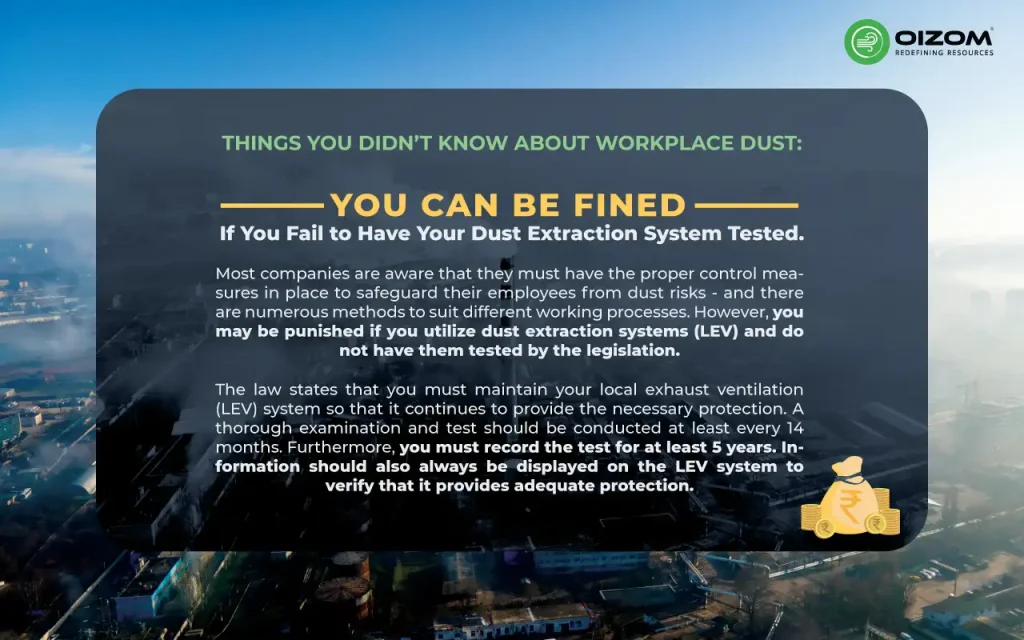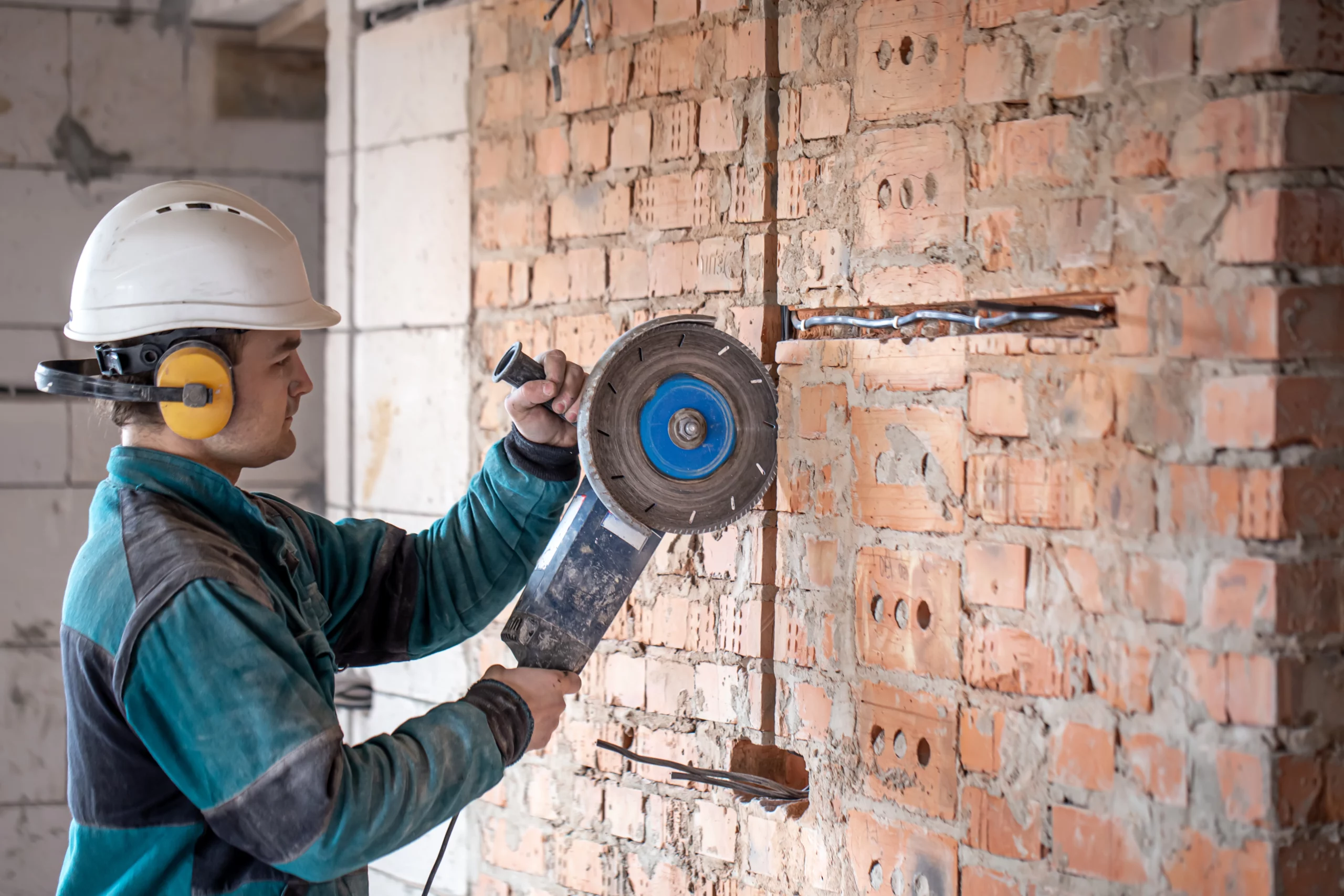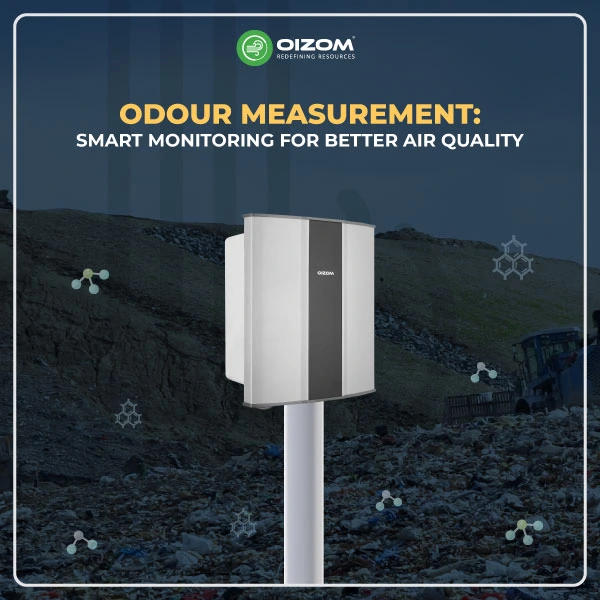Dust is omnipresent in the business, from the constant demand of building sites to the vibrating machines of manufacturing plants and even within the false peace of office environments where paper and machines reside together. These particles, which range in size from microscopic to visible to the naked eye, are produced by various processes. Stacking pieces, carving wood, and moulding plastic all contribute to the air fabric of particulates that define our professional settings.
Dust sampling is our key strategy in this continuous battle as stewards of environmental monitoring and protectors of occupational health. This careful technique allows us to chart the invisible, quantifying the air quality that nourishes our personnel. With precise dust concentration measurements, we gain the capacity to create robust defensive mechanisms – control measures that are both reactive and proactive, aimed at protecting workers from the insidious reach of hazardous dust.
This blog studies the research and strategies that drive this crucial part of environmental management. We will navigate the approaches that serve as accuracy monitors, the techniques that ensure dependability, and the interpretive abilities that turn data into strategy. These factors combine to form a holistic approach, empowering businesses and safety professionals to create settings that are not only productive but also safe.
Understanding Dust Sampling Methods
The air becomes an invisible war in the busy zone of industry and construction, where human effort meets raw materials. Dust, a collection of airborne particles, appears as both a consequence and an antagonist in the story of occupational health. Understanding dust monitoring methodologies is similar to interpreting the language of the air, providing us with insights critical to maintaining a safe and healthy work environment.
Tools of the Trade
- The tools employed in dust sampling are as varied as they are vital. Air sampling pumps, for instance, are the engines that drive the sampling process, drawing air through filters that act as nets capturing dust particles for subsequent analysis. Filter cassettes then safeguard these captured particles, while flowmeters serve as the timekeepers, ensuring that air flows through the system at the right pace for accurate measurement.
The Imperative of Regular Dust Monitoring
- Regular monitoring is not just a regulatory tick-box but a proactive strategy to prevent harm. By keeping a pulse on dust levels, employers can protect themselves from rising concentrations, adjusting controls and safeguarding the workforce before health is compromised.
Concept of Dust Sampling
The concept of dust sampling is a critical practice in the realm of occupational health and safety. It’s an investigative ritual that delves into the invisible, unearthing the particulate composition of the air that circulates in our workplaces. This practice is not merely about compliance or meeting industry standards; it’s about unravelling the microscopic mysteries that can impact the health and vitality of workers.
Delving into the Essence of Dust Sampling
- At the essence of dust sampling is the meticulous collection and analysis of air samples. This process, executed by professionals with a deep understanding of environmental science, employs precise methodologies to capture a clear picture of airborne particulate levels. Sampling is the gathering of evidence, a systematic collection of data that speaks volumes about the air quality within a professional setting. It’s a methodical approach that requires precision instruments and trained personnel to ensure the accuracy of the findings.
Embracing regular dust monitoring equips us with the power to:
- Detect and mitigate dust sources promptly.
- Fine-tune existing dust control measures for optimal effectiveness.
- Observe long-term trends and understand the impact of interventions.
- Inform risk assessments and refine occupational health initiatives.
- Demonstrate a constant commitment to maintaining a safe and healthy work environment.
In the grand narrative of workplace safety, regular dust monitoring is a chapter that cannot be ignored. It is a testament to an organisation’s resolve to not only protect its workforce but to foster a culture where clean air and well-being are paramount.

Differentiate Between Personal and Area Sampling Methods.
In the landscape of workplace air quality monitoring, personal and area dust sampling methods stand out as two critical approaches, each with its distinct focus and applications. Understanding the differences between these methods is essential for implementing an effective monitoring strategy that safeguards workers’ health and ensures a safe work environment.
Personal Dust Sampling: A Personalized Approach
Personal dust sampling fits the contours of an individual worker’s day, reflecting their unique exposure to dust. This method involves attaching a small, portable sampling device to the worker’s breathing zone—often near the collar or apron to capture the dust particles in the air they breathe. This personal sampling device moves with the worker throughout their shift, providing a detailed record of the dust concentrations encountered in real-time.
This personalised approach is particularly crucial for workers in high-risk roles, where dust generation is part of the job’s fabric, such as in construction, mining, or manufacturing. Here, personal dust sampling shines by offering several advantages:
- Targeted Assessment: It delivers a granular view of an individual’s dust exposure, leading to precise risk assessments and tailored protective measures.
- Identification of High-Risk Areas: By analysing the data from personal samplers across a workforce, high-risk zones within a workplace can be identified and addressed.
- Effectiveness Evaluation: Personal sampling provides direct feedback on the effectiveness of personal protective equipment (PPE) and other control measures.
- Compliance Monitoring: It ensures that individual exposure does not exceed regulatory limits, maintaining compliance with occupational health standards.
Area Dust Sampling: A Macroscopic View
Conversely, area dust sampling takes a step back, offering a panoramic view of the workplace’s air quality. This method involves placing sampling devices at strategic, static locations to measure dust levels over time. These samples provide an aggregate measure of dust concentrations, offering a snapshot of the environmental conditions within a particular workplace area.
Area dust sampling serves several vital purposes:
- Identifying Dust Sources: By mapping dust levels across different workplace areas, potential dust sources can be identified and controlled.
- Evaluating Control Measures: This method assesses the effectiveness of dust suppression and ventilation systems in managing overall dust levels.
- Establishing Background Levels: It helps establish baseline dust concentrations against which the impact of interventions can be measured.
- Informing Risk Assessments: Area sampling data contribute to comprehensive risk assessments, guiding the prioritisation of control strategies.
Choosing the Right Method
- Selecting between personal and area dust sampling or deciding to use a blend of both depends on the objectives of the air quality monitoring program. Personal sampling is when individual exposure levels must be evaluated, particularly for workers in direct contact with dust-generating processes. On the other hand, area sampling is optimal for understanding the environmental conditions of the workplace and identifying pervasive dust sources.
- Air quality monitors are the best tools to rely on. With real-time monitoring and accurate data insights, you can take smart mitigation measures. Additionally, you don’t need to be on site constantly, you can easily check it from your convenient device from anywhere.
- Ultimately, carefully applying personal and area dust sampling methods provides a robust framework for protecting worker health. By tailoring the approach to the needs of the workplace, employers can ensure that their workforce is not only productive but also breathes air that is as clean and safe as possible.
List the Tools That Were Used to Collect Dust Samples.
Dust sampling in occupational contexts combines science and precision, with each instrument playing an important function. The idea is simple: capture dust particles that float invisibly in the office air and correctly determine their concentration. This work is delegated to various specialised tools, each designed to fulfil a distinct purpose throughout the dust sample procedure.
Air Sampling Pumps
Air sampling pumps are a reliable way to sample dust, fumes, and mists to establish what particles are present in a workplace. They are frequently used when sampling is required for regulatory and health-based requirements to determine a worker’s exposure to a specific material.
Air sampling pumps come in various forms, from small, portable units worn by individual workers to larger, stationary units for area sampling. Each pump is exactly calibrated to draw air at a precise rate, and their reliability is paramount to the success of the sampling process.
How do air sampling pumps work?
- Air sampling requires a suitable pump, cassette with media, tubing and calibrator. Once a sample is collected, it’s sent for analysis according to the sampling method used.
NIOSH (National Institute for Occupational Safety and Health) and OSHA (Occupational Health and Safety Administration) developed sampling methods for many substances found in industries across Canada. These methods guide users through the sampling process, including:
- flow rate and volume
- sample media, and
- analysis technique.
Industries that use air sampling pumps:
- Mining
- Manufacturing
- Industrial hygiene
- Pharmaceutical
Filter Cassettes
The essential components of air sampling are filter cassettes. Many sampling cassettes use pumps to capture particles from the air; they are especially useful for mould collecting. Facilities can use the cylinder-shaped cassettes to collect air pollutants from work areas and transmit them to a laboratory for analysis.
Once the pump draws in the air, it passes through a filter cassette. These are the custodians of the captured particulate matter. The cassettes contain filters, usually made of a finely woven material, that physically trap the dust particles. These particles remain on the filter until they can be analysed, and the integrity of this capture is crucial. The design of the filter cassettes ensures an airtight seal, preventing any loss of the collected sample and preserving the accuracy of the measurement.
Industries that use filter cassettes
- Gas Filtration and Purification
- Pharmaceutical and Biopharmaceutical Processing
- HVAC and Air Conditioning Systems
- Food and Beverage Processing
Flowmeters
These flow meters are separate from the pump to allow the user to set the flow for more than one pump with the same meter. It features an expanded scale and includes necessary adapters for use with particulate cassettes.
These devices measure the volume of air that passes through the sampling pump and are crucial to ensuring that the sample collected is representative of the workplace environment. Whether they employ mechanical, electronic, or thermal measuring techniques, flowmeters are calibrated for precision, and their readouts are essential for interpreting the dust sample results accurately.
Beyond the Essentials: Enhancing Dust Sampling
In addition to air sampling pumps, filter cassettes, and flowmeters, the dust sampling process is supported by a range of supplementary tools:
- Calibration Devices: These verify that the air sampling pumps and flowmeters operate correctly, ensuring the sampling process meets the required standards.
- Data Loggers: For long-term monitoring, data loggers can record sampling data over extended periods, allowing for the analysis of trends and the efficacy of dust control measures.
- Laboratory Analysis Equipment: After collection, dust samples are taken to a laboratory where sophisticated equipment is used to analyse the nature and quantity of the dust. This can include microscopes for particle sizing, gravimetric scales for mass measurements, and spectrometers for chemical composition analysis.
Interpretation of Dust Sampling Results
The collection of dust samples is an accurate science. Still, the true mastery lies in interpreting the results, a process similar to translating a complex language of numbers into actionable health and safety measures. It is here, in the analysis and understanding of data, that we can truly unravel the mysteries of workplace air quality.
Understanding Dust Concentration Units
Interpreting dust sampling results begins with understanding the metrics used. Dust concentrations are typically reported in milligrams per cubic meter of air (mg/m³), a unit that quantifies dust mass in a given volume. This measure is the cornerstone of analysis, quantifying the invisible threat and transforming it into tangible data.
Comparing the Results to Occupational Exposure Limits (OELs)
The comparison of dust concentration levels against Occupational Exposure Limits (OELs) is a critical next step. OELs, established by health and safety regulatory bodies, represent the maximum safe exposure levels for various substances, including dust. When dust concentrations exceed these limits, it raises a red flag, signalling that the workplace environment may deviate toward unsafe conditions. Compliance with OELs is not just about adhering to regulations; it’s a commitment to worker health.
Taking Particle Size into Account
When it comes to dust, size matters. Their size profoundly influences the health impact of dust particles. Respirable dust particles, particularly those smaller than 10 micrometres, can bypass the body’s natural respiratory defences and lodge deep within the lungs, posing significant health risks. Thus, particle size distribution is a vital piece of data in dust sampling results, as it helps determine the potential for respiratory hazards..
Importance of Regular Dust Monitoring
Regular dust monitoring is an indispensable element of a robust occupational health and safety strategy. It acts as a preemptive measure, continuously observe over the air quality in the workplace, ensuring that the environment remains valuable to health and well-being.
Dust Exposure
Invisible to the eye, dust particles are a pervasive workplace hazard. Chronic exposure to dust can lead to a spectrum of health issues, ranging from mild irritations to severe respiratory conditions like asthma or even pneumoconiosis. Regular dust monitoring allows for the detection and quantification of this airborne hazard, facilitating timely intervention to mitigate potential health risks.
Proactive Hazard Identification
The regularity of monitoring is critical to its effectiveness. Consistent and systematic dust monitoring can uncover trends and patterns of dust generation, leading to the identification of high-risk activities and zones within the workplace. Early identification of these hazards enables employers to implement targeted control measures, such as improved ventilation, dust collection systems, or revising work processes to minimise dust generation.
Cultivating a Culture of Safety
Continuous dust monitoring does more than ensure compliance with health regulations; it reflects an organisation’s commitment to its employees’ well-being. This commitment is integral to establishing a culture of safety where employees feel valued and protected. Workers in an environment with clear, enforced safety practices are more likely to be engaged, productive, and loyal to their employer.
The Benefits of Regular Monitoring
The benefits of establishing a routine for dust monitoring are multifaceted:
- Health Cost Savings: Regular monitoring helps prevent chronic health conditions associated with dust exposure, potentially reducing healthcare costs and absenteeism.
- Compliance and Liability: Keeping dust levels within regulated limits can protect an organisation from non-compliance penalties and reduce liability for worker health claims.
- Workplace Morale: A proactive approach to health and safety can significantly boost workplace morale and employee satisfaction, contributing to a positive work environment.
- Environmental Stewardship: By controlling dust emissions, a company also demonstrates environmental responsibility, which can enhance its reputation and appeal to eco-conscious consumers and potential employees.
Conclusion
Dust sampling serves as a monitor in occupational health and safety, proving that ‘prevention is better than cure.’ It is a rigorous process that not only aids in identifying potential airborne risks but also leads to the execution of mitigation measures. Employers can create settings that are not only compatible with safety rules but also promote worker health and well-being by precisely measuring dust concentrations.
Regular dust monitoring is not just a routine procedure; it is a proactive strategy to ensure the safety and health of the workplace. This continuous vigilance allows for the early detection of potential risks, enabling swift and effective remediation to maintain a safe work environment. It is a crucial step that reflects an employer’s commitment to their workforce, demonstrating that the health of their employees is of paramount importance.
Therefore, let us not underestimate the power of the invisible dust nor the capacity of well-informed actions to dispel the threats they pose. In dust sampling and regular monitoring, especially through effective and low-maintenance Passive Dust Sampling Techniques, we have a clear path to achieving these goals, ensuring a future where every breath within the workplace contributes to sustaining health and vitality.






